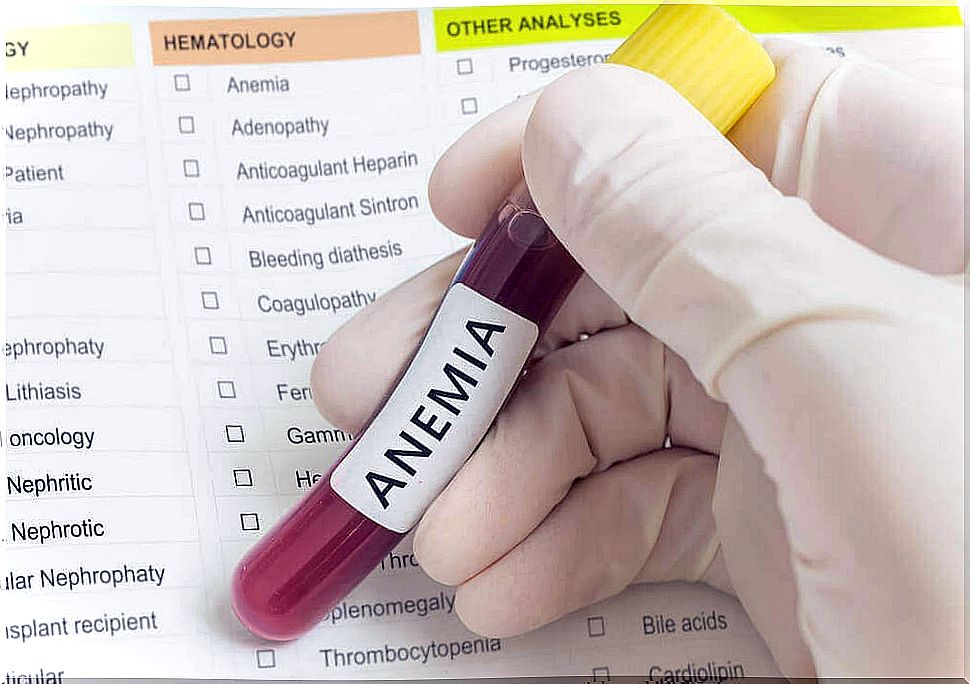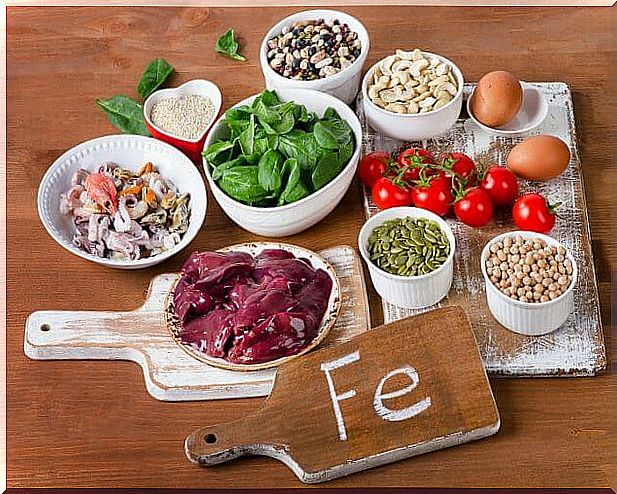Iron Deficiency Anemia In Children: Useful Information

Iron deficiency anemia in children is a condition whose origin is iron deficiency. This mineral is an essential part of hemoglobin, a protein responsible for transporting oxygen in the blood for the optimal functioning of the body’s tissues.
The disease is common in children between the ages of 6 months and 3 years, especially when they are not eating proper nutrition. However, it also affects older children and is quite common. What are its causes and how does iron deficiency anemia manifest itself in children ?
To resolve these questions, it is essential to address the most relevant aspects of the disease. So let’s see the main triggers and symptoms that allow you to recognize it in a timely manner.
Why does iron deficiency anemia affect children?
Low iron absorption is the main cause of iron deficiency anemia in children. The body absorbs this mineral through food and from old red blood cells. Some factors related to the disease are:
- A diet poor in this nutrient
- Inability of the body to absorb iron
- Slow and prolonged blood loss
- Excessive consumption of cow’s milk (especially when it replaces breast milk)
- Food allergy
- Lead poisoning

Symptoms of iron deficiency anemia in children
In its initial stages, the disease is asymptomatic, a factor that makes diagnosis and, therefore, treatment difficult. During its course it causes:
- Bluish or very pale discoloration of the sclera of the eyes
- Brittle nails
- Loss of appetite or cravings for unusual foods
- Weakness and prolonged fatigue
- Headache and dizziness
- Irritability and discomfort
- Difficulty in breathing and tachycardia
- Pale skin
- Weight gain and swelling
Diagnosis
To diagnose iron deficiency anemia in children, doctors do a physical evaluation and ask several questions. A blood sample is taken and analyzed in an analysis laboratory. This analysis lets you know if your red blood cells are iron deficient.
The specific tests that allow to confirm the disease are:
- Hematocrit: able to detect anemia and other blood disorders.
- Serum Ferritin: Reveals the amount of iron stored in the body.
- Serum iron: shows the amount of this element present in the blood.
- Total iron binding capacity (CTFH): Used to measure the ability of a protein called transferrin to carry iron in the blood.
Prevention of iron deficiency anemia in children
There are two basic measures to prevent this pathology: nutritional and medical checks. However, parents play a very important role, as they ensure care for the child.

Provide an appropriate diet
- Babies should take breast milk up to 6 months of age whenever possible. Although some ignore it, it allows for better iron absorption and is crucial for the development of the immune system.
- If this is not possible, the milk chosen must be enriched with iron.
- From 5 to 6 months of age, more nutrients can be provided with fruits, vegetables and lean meats.
- Avoid giving cow’s milk to babies before 12 months.
- When the child is older, a balanced and varied diet may be sufficient to obtain the correct iron values.
Consult your pediatrician
Any manifestation of anemia should be treated by the pediatrician. If the child has any previous or risk factors, he should receive constant medical checks.
Treatment of iron deficiency anemia in children
Due to their age and development process, babies only absorb a small amount of the iron they consume. To get the necessary amount (about 8 or 10 mg per day), it is important to add foods that contain it to their diet .

- Lean meats (chicken, turkey, pork)
- Fish and seafood
- Eggs
- Legumes (dried beans, lentils, soy)
- Beef liver
- oatmeal
- Peanut butter
- Dried fruit
- Plum juice
- Spinach
- Whole grains
When healthy eating fails to regulate blood iron levels, doctors suggest oral supplements. In no case should iron supplements or vitamins be given without the supervision of the pediatrician.
To keep in mind!
Failure to intervene can interfere with the child’s learning and development process. Low iron levels reduce attention span and alertness. Acting promptly is essential.









